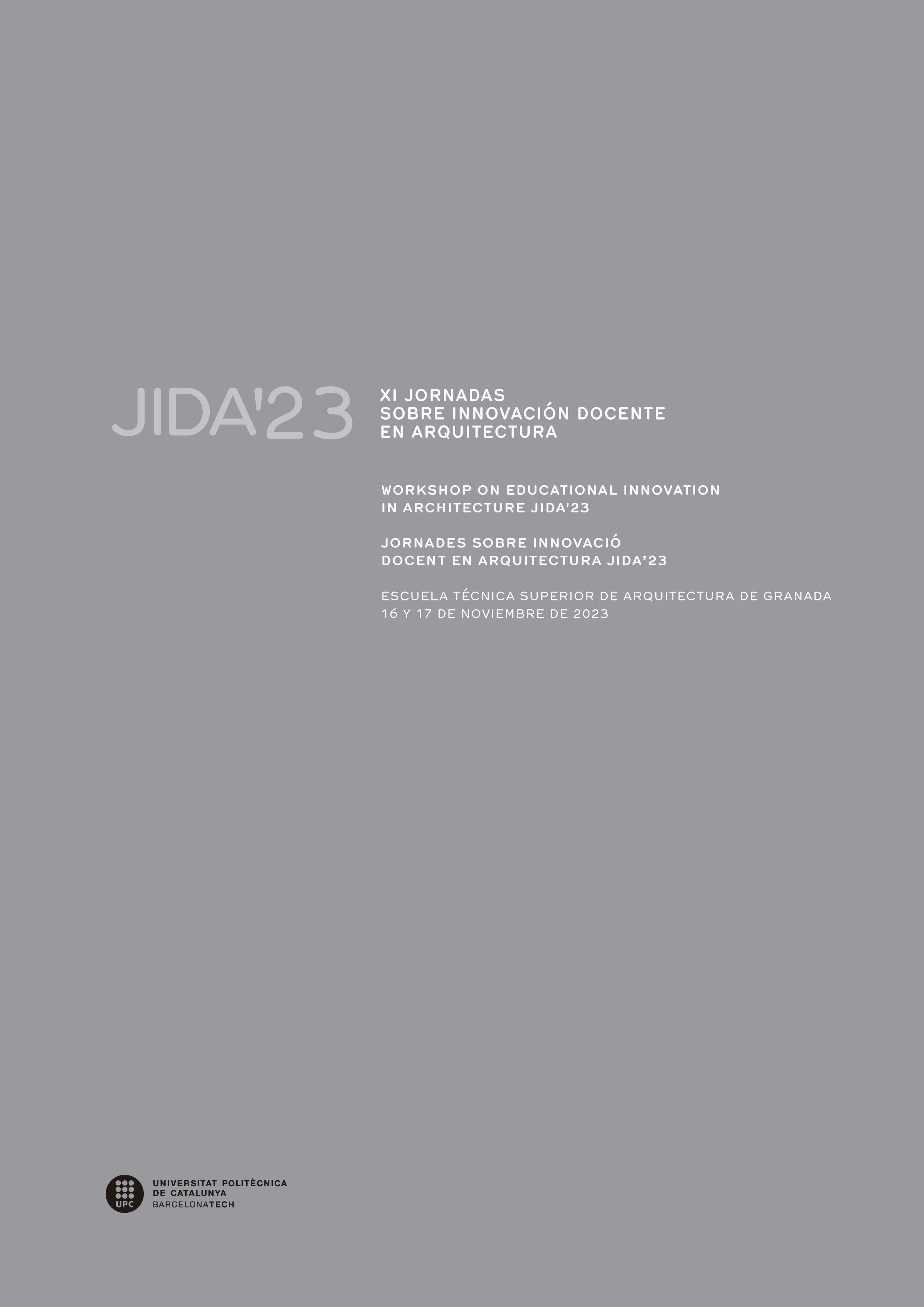Didactics in architecture: the empirical environmental data as a support for creativity
DOI:
https://doi.org/10.5821/jida.2023.12287Keywords:
active didactics in architecture, sustainability in local contexts, se of empirical environmental data, innovation in architectural design, bioclimatic diagramsAbstract
This communication presents a didactic experience in the pedagogical field of sustainable architecture. It proposes the use of empirical climatic and environmental data as a basis for a critical discussion on sustainability in local contexts with limited resources. The proposed methodology seeks to avoid falling into excessive architectural technicalities and to encourage students' creativity in order to generate contemporary and innovative responses to the persistent challenges of creating habitable environments in a context of climate change. The results obtained expose a great heterogeneity of architectural proposals and conclude that the use of empirical data in an academic and pedagogical environment focused on architectural design is configured as a solid support for creativity, without undermining the creative diversity of the project responses generated.
References
Arráez, Morella, Josefina Calles, and Liuval Moreno de Tovar. 2006. "La Hermenéutica: una actividad interpretativa." Sapiens 7 (2): 171-181. http://ve.scielo.org/scielo.php?script=sci_arttext&pid=S1317-58152006000200012&lng=es&tlng=es
Beck, Hylke E, Niklaus E Zimmermann, Tim R McVicar, Noemi Vergopolan, Alexis Berg, and Eric F Wood. 2018. "Present and future Köppen-Geiger climate classification maps at 1-km resolution." Scientific data 5 (1): 1-12. https://doi.org/https://doi.org/10.1038/sdata.2018.214
Bertol-Gros, Ana, and Fco Javier Álvarez Atarés. 2022. "ATBP: aprendizaje tecnológico basado en proyectos." Jornadas sobre Innovación Docente en Arquitectura. https://doi.org/https://doi.org/10.5821/jida.2022.11531
de Camilloni, Alicia W. 2001. "Modalidades y proyectos de cambio curricular." Aportes para un cambio curricular en Argentina.
Diamond, S, G Way, L Crow, and B Schafer. 1993. "Climate and Site." The Energy Design Handbook, The American Institute of Architects, Washington, DC: 25.
García Hernández, Marlene, Miguel Lugones Botell, and Limay Lozada García. 2006. "Algunas consideraciones teóricas y metodológicas sobre el seminario." Revista cubana de medicina general integral 22 (3): 0-0. http://scielo.sld.cu/scielo.php?script=sci_arttext&pid=S0864-21252006000300016
Latour, Bruno. 2004. "¿Por Qué se ha Quedado la Crítica sin Energía? De los Asuntos de Hecho a las Cuestiones de Preocupación." Convergencia Revista de Ciencias Sociales (35). https://convergencia.uaemex.mx/article/view/1539
Loyola, Carmen Niurka Piña, Aimeé Seife Echevarría, and Carmen Margarita Rodríguez Borrell. 2012. "El seminario como forma de organización de la enseñanza." MediSur 10 (S2): 109-116. https://medisur.sld.cu/index.php/medisur/article/view/1916
Milne, Murray, and Baruch Givoni. 1979. "Architectural design based on climate." Energy conservation through building design: 96-113.
Naselli, César. 2013. El rol de la innovación creadora: en la lógica interna del diseño arquitectónico. I+ p.
Rahm, Philippe. 2021. Escritos climáticos. Puente Editores.
Rodríguez Sánchez, Manuel. 2011. "Metodologías docentes en el EEES: de la clase magistral al portafolio." Tendencias pedagógicas (17): 83-103. https://dialnet.unirioja.es/servlet/articulo?codigo=3653734
Serres, Michel. 2014. Pulgarcita. Editorial Gedisa.






















